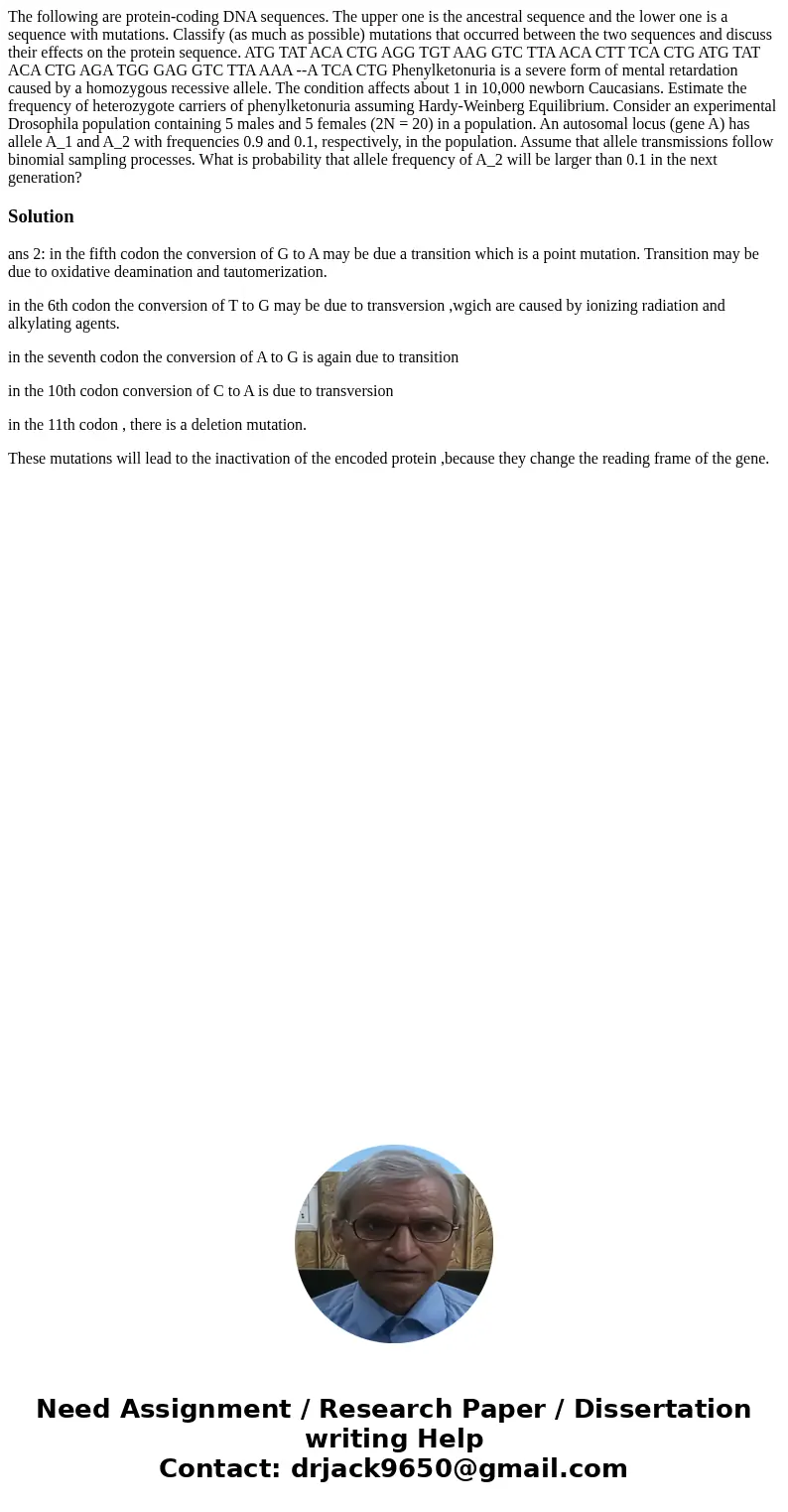The following are proteincoding DNA sequences The upper one
The following are protein-coding DNA sequences. The upper one is the ancestral sequence and the lower one is a sequence with mutations. Classify (as much as possible) mutations that occurred between the two sequences and discuss their effects on the protein sequence. ATG TAT ACA CTG AGG TGT AAG GTC TTA ACA CTT TCA CTG ATG TAT ACA CTG AGA TGG GAG GTC TTA AAA --A TCA CTG Phenylketonuria is a severe form of mental retardation caused by a homozygous recessive allele. The condition affects about 1 in 10,000 newborn Caucasians. Estimate the frequency of heterozygote carriers of phenylketonuria assuming Hardy-Weinberg Equilibrium. Consider an experimental Drosophila population containing 5 males and 5 females (2N = 20) in a population. An autosomal locus (gene A) has allele A_1 and A_2 with frequencies 0.9 and 0.1, respectively, in the population. Assume that allele transmissions follow binomial sampling processes. What is probability that allele frequency of A_2 will be larger than 0.1 in the next generation?
Solution
ans 2: in the fifth codon the conversion of G to A may be due a transition which is a point mutation. Transition may be due to oxidative deamination and tautomerization.
in the 6th codon the conversion of T to G may be due to transversion ,wgich are caused by ionizing radiation and alkylating agents.
in the seventh codon the conversion of A to G is again due to transition
in the 10th codon conversion of C to A is due to transversion
in the 11th codon , there is a deletion mutation.
These mutations will lead to the inactivation of the encoded protein ,because they change the reading frame of the gene.

 Homework Sourse
Homework Sourse